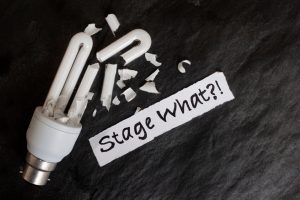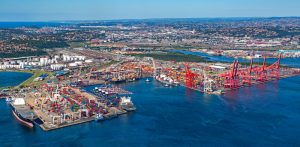 Personal Protective Equipment (PPE) is a subcomponent of the maintenance, repair and operational (MRO) expenditure of any large organisation. MRO expenditure is typically about 8% of large organisations’ total procurement expenditure. PPE represents 1% of total procurement expenditure, and can have more detrimental effects on an organisation than some of the other MRO sub-categories, Isak Marais, MD of specialist PPE consultancy, Bramhope, tells SmartProcurement.
Personal Protective Equipment (PPE) is a subcomponent of the maintenance, repair and operational (MRO) expenditure of any large organisation. MRO expenditure is typically about 8% of large organisations’ total procurement expenditure. PPE represents 1% of total procurement expenditure, and can have more detrimental effects on an organisation than some of the other MRO sub-categories, Isak Marais, MD of specialist PPE consultancy, Bramhope, tells SmartProcurement.
This article is a follow-up to the article entitled ‘25% Saving on PPE Procurement’ published in SmartProcurement in October.
Marais holds an MBA from Henley Management College in the UK and has specialised in ‘The Effects that E-Commerce has on Transaction Cost in The Supply and Demand Chains of Companies’.
“To understand these effects better, one has to first examine the components or elements of PPE total cost of ownership (TCO).
1. The cost of the PPE line item.
2. Procurement costs associated with the item.
3. Holding cost.
4. Total medical cost of injured people (on all levels).
5. Total cost of down time.
6. Legal costs.
Cost of the PPE line item
“If we take the cost of a line item and equate it to 100%, then in general terms this will be the cost of the item that is measured and controlled. Providing that the correct item is selected for the application, the other elements will have a lower cost associated with them. However, we have found that in most cases the focus has been solely on the lowest possible cost for the item, without taking standards or the item’s application into full consideration.
Procurement cost associated with the item
“The cost of PPE procurement in organisations varies from 6% to 15%, depending on the frequency of procurement and the size of the organisation and its processes. Some of the costs relate to searching, bargaining, contracting and enforcing costs (management cost). We will, for this case, take 10% as the average.
Holding cost
“If the organisation stocks and controls the inventory, the percentage allocated will be around 2% per month. This all depends on the weighted average cost of capital (WACC) and the amount of safety stock carried. We will assume that stock is held for two months, which would take the cost to 6%. When organisations have outsourced Vendor Inventory Management (VMI), these costs are excluded.
 Total medical costs of injured people (on all levels)
Total medical costs of injured people (on all levels)
“This cost, in 95% of all cases where Bramhope has carried out a PPE audit, did not form part of the cost associated with PPE. Determining this cost also depends on the level of injury. As an example: the treatment of an eye injury can cost anything between R15 000 and R100 000. Applying a cost level of 500% is, in my experience at Bramhope, conservative.
Incidently, certified spectacles cost from as little as R15. However, although many such examples exist, what is imperative is that the use of PPE be managed and controlled.
Total cost of down time / productivity
“Although down time is one of the cost components that the correct or incorrect application of PPE can influence significantly, measurement is done by very few organisations owing to the complexity of its measurement. However, it is simpler if the organisation integrates its HR Policy, OHS Policy, EMS Policy and PPE Policy into the organisation’s accounting system. To aid our comparison with TCO of PPE we will put a fictitious cost of 40%.
Legal cost
“This is a cost that is developing as personnel become aware of their rights in the workplace and health and safety legislation becomes more encompassing. The cost escalation is mainly driven by increasing legal action being taken by workers, unions and workers rights groups. Past cases associated with Asbestoses have been noted and current cases associated with respiratory problems are making headlines. This will increase in the years to come. Owing to the current lack of figures available we will assume a cost of 130%.
“If we combine all these figures then the TCO of PPE will be 786%. This cost will vary from organisation to organisation and is dependent upon them buying PPE that is fit for purpose and managed and controlled through various policies and procedures. The most effective way to curb this cost is to ensure that PPE is certified and that a proper PPE policy with worker profiling is in place.
Bramhope systems offer global procurement through an efficient supply chain and a monitoring system that ensures efficiency in the demand chain by examining TCO of PPE, rather than line/item costing.
Bramhope is offering SmartProcurement readers a 40% discount on Personal Protective Equipment, click here to search for PPE products at heavily reduced prices.


























